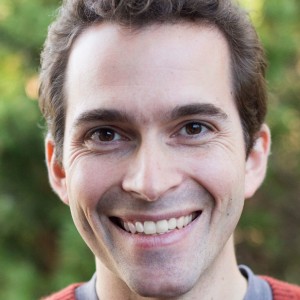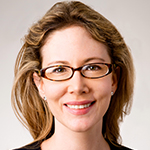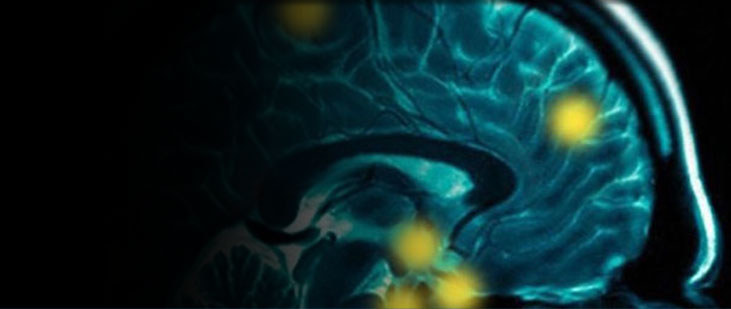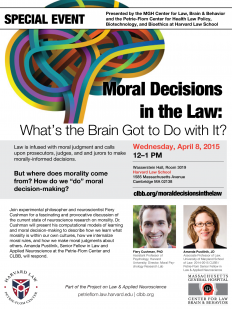Law – particularly criminal law – is infused with moral judgment and calls upon prosecutors, judges, and and jurors to make morally-informed decisions. But where does morality come from? How do we “do” moral decision-making?
At this lunchtime seminar, experimental philosopher and neuroscientist Fiery Cushman led a fascinating and provocative discussion of the current state of neuroscience research on morality. Dr. Cushman presented his computational models of learning and moral decision-making to describe how we learn what morality is within our own cultures, how we internalize moral rules, and how we make moral judgments about others. Amanda Pustilnik, Senior Fellow in Law and Applied Neuroscience at the Petrie-Flom Center and CLBB, responded.
The event was held on April 8, 2015 at Harvard Law School.
 Fiery Cushman, PhD is assistant professor in the Department of Psychology at Harvard University. From 2011-2014 he served as a post-doctoral fellow in moral psychology, funded by the Mind, Brain & Behavior Initiative at Harvard University.
Fiery Cushman, PhD is assistant professor in the Department of Psychology at Harvard University. From 2011-2014 he served as a post-doctoral fellow in moral psychology, funded by the Mind, Brain & Behavior Initiative at Harvard University.
 Amanda Pustilnik, JD is the Senior Fellow for Law & Applied Neuroscience at CLBB and the Petrie-Flom Center, CLBB faculty member, and Assistant Professor of Law at the University of Maryland School of Law.
Amanda Pustilnik, JD is the Senior Fellow for Law & Applied Neuroscience at CLBB and the Petrie-Flom Center, CLBB faculty member, and Assistant Professor of Law at the University of Maryland School of Law.
This conversation is part of the Joint Venture in Law & Applied Neuroscience between CLBB and the Petrie-Flom Center for Bioethics of Harvard Law School. Amanda Pustilnik is the Joint Venture’s 2014-2015 Senior Fellow in Law & Applied Neuroscience.
Watch video of the entire event below, or explore past events on pain, memory, free will, and criminal responsibility on CLBB’s Vimeo channel.




